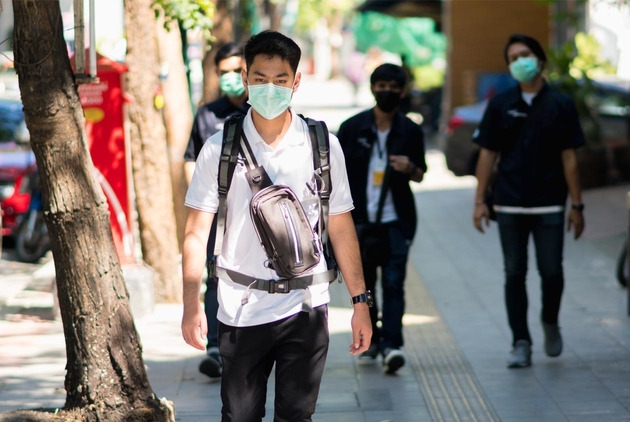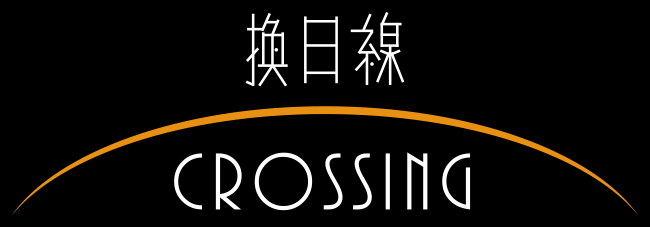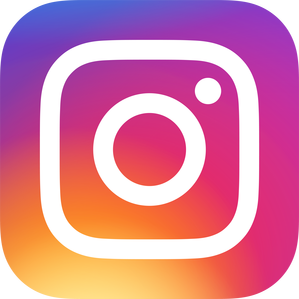Opinion
Behind WHO’s Wuhan Coronavirus Controversy: Epidemic Politics and the Black Hole Effect

Source:Shutterstock
On January 23rd, the World Health Organization (WHO) made a stunning announcement: the 2019 novel coronavirus (2019-nCoV), first discovered in the Chinese city of Wuhan and now spread to multiple countries around the globe, will not be designated as a “Public Health Emergency of International Concern” (PHEIC).
Views
Behind WHO’s Wuhan Coronavirus Controversy: Epidemic Politics and the Black Hole Effect
By Kai-yuan ChengCrossing@CommonWealth
This article presents the opinion or perspective of the original author / organization, which does not represent the standpoint of CommonWealth magazine.
[Editor's update: The World Health Organization has declared the coronavirus outbreak a public health emergency of international concern (PHEIC) on Jan 30th]
As early as December 2019, rumors of an epidemic were already swirling around on the internet. On New Year’s Eve, Wuhan authorities officially acknowledged the outbreak of an unknown form of pneumonia. Development has been drastic for the past three weeks. Last weekend, when a meeting of the Emergency Committee was convened by the WHO to decide whether or not 2019-nCoV should be designated as a PHEIC, predictions, debates, and analyses reached a fever pitch. The declaration of a PHEIC was momentous; it affected the allocation of global resources and the direction of national policies around the world.
On January 22nd, news that China was closing off the city of Wuhan sent shockwaves across the globe. At the same time, the WHO’s Emergency Committee reached the inexplicable conclusion that it would “make the decision tomorrow”. When “tomorrow” came at last, the WHO declared the Wuhan coronavirus would not be designated as a PHEIC. This bombshell announcement sent paranoia and public debate into a frenzy.
What Is a PHEIC?
According to the WHO, a “Public Health Emergency of International Concern” labels an epidemic or a health crisis as “a public health risk to other States through the international spread of disease” and “to potentially require a coordinated international response”. By definition, a PHEIC is serious, unexpected, and unusual; it may require immediate international action. The responsibility of determining what constitutes a PHEIC lies with the WHO Director-General. Before a decision can be made, the Director-General must convene a meeting of the Emergency Committee and take their recommendations into consideration.
At the same time, the Emergency Committee and the Director-General may offer temporary recommendations about the epidemic. This helps countries formulate a response to the crisis. Recommendations may include travel limitations, trade limitations, and border inspections—policies that deeply affect the nation’s economy, people’s livelihoods, and national security.
Since its conception in 2005, the WHO has declared PHEIC exactly five times: twice for the Ebola virus (2014, 2019), once for H1N1 (2009), once for polio (2014), and once for the Zika virus (2016).
The declaration of a PHEIC has often been interpreted as an important rallying cry for the global community to prevent the outbreak of an international pandemic. In the past, the declaration of a PHEIC had great effect on nations and NGOs. It influenced how much attention, resources, and funds were devoted to an epidemic by global institutions. In 2014, less than two months after the WHO declared the Ebola virus in West Africa was a PHEIC, the United States deployed three thousand troops to send aid to Africa. The United Nations Security Council adopted various resolutions, and the Secretary-General of the United Nations assembled an interagency team to coordinate a response.
 WHO Director-General Tedros Adhanom (Source: Alexandros Michailidis@Shutterstock)
WHO Director-General Tedros Adhanom (Source: Alexandros Michailidis@Shutterstock)
Was the Decision Not to Declare a PHEIC the Result of Chinese Interference?
Because declaring a PHEIC was so momentous, when the WHO first convened a meeting of the Emergency Committee on January 22nd and reached the strange decision to “decide tomorrow”, there was quite a bit of blowback. Journalists and internet denizens suspected the WHO of bowing to Chinese pressure. The Guardian opined that the WHO “stepped back” from making the declaration. On the flip side, Richard Horton, editor-in-chief of the British medical journal The Lancet, tweeted that such a characterization was neither “right or fair”, since the WHO had made it clear it was “seeking more information” before it made a decision.
Historically, the declaration of a PHEIC has always been a thorny subject. This is not the first time the WHO has been mired in controversy. The last PHEIC was only six month ago, when there was an outbreak of the Ebola virus in eastern Congo. It took the WHO a year and four meetings of the Emergency Committee to declare the Ebola virus a PHEIC. The process has been widely criticized by public health experts. As for the outbreak of the Ebola virus in West Africa in 2014, despite the pleading of NGOs such as Médecins Sans Frontières, the WHO only convened an Emergency Committee and declared a PHEIC six months after the first recorded case of infection outside Africa.
After the WHO made their announcement on January 23rd, many in the global community suspected the WHO was dragging its feet in order to show China preferential treatment. But the fact is, if the WHO had declared 2019-nCoV to be a PHEIC, it would the fastest any epidemic has ever been designated as a PHEIC.
An article in the American Journal of Public Health compared H1N1 in 2009, the Ebola virus in 2014, and the Zika virus in 2016. All three epidemics were designated as PHEIC. The article found the time between disease detection and the WHO declaring it a PHEIC was a very quick thirty-six days in the case of H1N1, sixty-five days in the case of the Zika virus, and a grueling one hundred thirty-eight days in the case of the Ebola virus.
The author found that newly discovered diseases and diseases that had a greater impact on Americans were dealt with very quickly. (All three epidemics were designated PHEIC within ten days of directly affecting the United States.) The mobilization of the global community, (if measured by how quickly the PHEIC is issued), does not seem to have a direct correlation with the seriousness of the sickness or the number of people affected.
Internal documents show the WHO was hesitant to declare a PHEIC in 2014 because it was afraid of provoking African nations and slowing down their economy. The effect on the ongoing Hajj celebrations was also taken into consideration. This tells us “political factors” are always part of the equation when the WHO makes policy decisions.
Many Factors Influence a PHEIC, but No Decision is Final
 WHO headquarters in Geneva (Source: Martin Good@Shutterstock)
WHO headquarters in Geneva (Source: Martin Good@Shutterstock)
As for what’s happening right now with 2019-nCoV, it’s not a stretch to say China may be putting pressure on the WHO. Many have pointed out China has a lot of pull within the organization. The Chinese are also aggressively and ambitiously asserting themselves in the United Nations. Some critics have gone so far as to highlight the close relationship between China and the current WHO Director-General. Even though the official number of cases published by the Chinese government looks suspiciously low; and even as China takes the drastic step of shutting down Wuhan at the expense of human rights and security concerns; the Director-General has issued a statement affirming Chinese efforts and transparency. This paradox left many feeling confused and uneasy.
If we were to discover China really exerted pressure on the WHO to decline to declare a PHEIC, it would come as no surprise. However, in the historical context of PHEICs, we can see it’s not the first time this has happened. The unfortunate truth is, Chinese pressure is just one of the many political factors the WHO has to deal with on a daily basis. If what’s happened in the past week was enough for us to caricature the WHO as “China’s puppet” and its decision as “the will of China”, we run the risk of being opinionated, indiscreet, and unduely contemptuous of the WHO. The WHO’s decision not to declare a PHEIC has layers of meaning that are obscure to public health experts and keyboard warriors alike.
What’s more, the WHO’s response to the Ebola virus in 2019 tells us the decision of the Emergency Committee may not be final. The WHO has announced that the Emergency Committee will reconvene in a few days. The debate on how to monitor and respond to the outbreak is ongoing.
Do We Need a PHEIC? Epidemic Politics Based on a False Dichotomy Must Stop
To look at it another way, is it really healthy for the global community to require the declaration of a PHEIC before it shows concern for an epidemic and becomes willing to lend a helping hand?
The fact of the matter is, in the aftermath of every pandemic, many critics will say over-reliance on the “global standard” of a PHEIC is a sort of “false dichotomy” that hinders effective preventative measures. Experts have recommended the WHO adopt a multi-level grading system in lieu of the black-and-white PHEIC system. In 2015, when the WHO set up a contingency fund to respond to the Ebola outbreak of the previous year, it was made clear that the designation of a PHEIC was not required for the WHO to give monetary aid.
Two years ago, when the WHO published the latest General Programme of Work, it warned that infectious diseases of unclear origins will become the norm in the current epoch. This does not mean the human population is at the mercy of super plagues or that a zombie apocalypse straight out of a third-rate Hollywood flick is upon us. The WHO set up the PHEIC system in response to the SARS epidemic in 2002. The system has never been perfect, and it’s had its share of controversies over the years. It’s ironic that China is again at the center of a PHEIC-related scandal. Perhaps what we need to do is review the appropriateness of such a system; we should ask ourselves what kind of message and psychological impact is being conveyed to the general public through such labels.
Preventing the “Black Hole Effect” of Epidemics is the One True Way
Even in the face of such a crisis, we must not forget that while an infectious disease of this nature is a health-related topic which easily garners the attention of the media and public opinion, there are far more problems of a less “sexy” nature we need to contend with: such as chronic diseases, mental health, the effect of climate change on health, occupational hazards, etc.
Devi Sridhar, Professor and Chair of Global Public Health at the University of Edinburgh, warned recently that outbreaks such as 2019-nCoV clearly showed the “black hole effect” of infectious diseases. That is to say, an epidemic such as this sucks all the resources, expertise, and media attention like a supermassive black hole. This not only detracts from other pressing health-related issues that are also starving for funds and resources. It’s also a burden on health professionals dealing with the ongoing crisis. To be placed in the spotlight for all the world to dissect and criticize may be detrimental to both their efficiency and morale.
For example, clinical staff have observed paradoxical and ironic behavior among the populace. People come to the hospital asking to take a flu shot. When told that the shot was not specifically designed to prevent the Wuhan coronavirus, they lose interest and refuse to take the shot at all. At the end of January, the Global Forum on Child Pneumonia will take place in Barcelona. And though the internet is abuzz with pneumonia-related discussions, no one is paying any attention to this very important event. Too much attention focused on 2019-nCoV is apparently doing nothing to improve public awareness of health issues as a whole.
Public health is worthy of public attention, but if our end goal is to maximize the efficacy of preventative measures, then the mob mentality and too much attention focused on one issue is something we should avoid. They say the fight against disease is akin to a war. But public health has more than one battlefront, even in the face of a pandemic. If we concentrate all our forces against only one enemy, it will only be a matter of time before we find enemies at our back.
Have you read?
♦ Still a WHO Outsider, Taiwan's Role in the Global Organization
♦ Controversy of Inflated Reporting for National Health Insurance
♦ Will Taiwanese Physicians Flock to China?
♦ No More ‘Kidney Dialysis Island’
Translated by Jack C.
Edited by Sharon Tseng

Crossing features more than 200 (still increasing) Taiwanese new generation from over 110 cities around the globe. They have no fancy rhetoric and sophisticated knowledge, just genuine views and sincere narratives. They are simply our friends who happen to stay abroad, generously and naturally sharing their stories, experience and perspectives. See also Crossing Arab World.
Original content can be found at the website of Crossing: 世衛組織宣布「武漢肺炎不構成 PHEIC」引爆親中爭議──談防疫政治與黑洞效應
This article is reproduced under the permission of Crossing. It presents the opinion or perspective of the original author / organization, which does not represent the standpoint of CommonWealth magazine.












